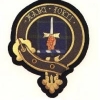-
Posts
171 -
Joined
-
Last visited
-
Days Won
7
Aussieaid last won the day on May 8 2013
Aussieaid had the most liked content!
Previous Fields
-
Occupation
"Hermit" is looking more and more appealing...
Profile Information
-
Gender
Female
Recent Profile Visitors
20,674 profile views
Aussieaid's Achievements
Newbie (1/14)
47
Reputation
-
Aussieaid started following Tyler Hastings Passing
-

Tyler Hastings Passing
Aussieaid replied to Lone Star's topic in Line Of Duty Deaths & other passings
Thank you for letting us know. I’m so sad to hear this. He was a kind and funny guy. He would have turned 30 next month, I think. So young and tragic timing. 😢 -
I don't know how many people remember me or Fireflymedic but since I met her on here a few years ago and it was the beginning of our friendship I wanted to update EMTCity on her sad news. About a week ago her husband found her unconscious up against the bathroom door when he got home from work. She had been struggling with getting her seizures under control. She coded en route to the hospital and has been in the ICU for the past week. The latest news is that her husband will be taking her off life support on Sunday as she had too great of a hypoxic injury and recover. I just wanted the City to know as I am sure she still has City friends around. RIP Fireflymedic. You will be missed. <3
-
NRB is always a better choice even for an infant if they tolerate it. IF they don't then you use a different option like blow by with a regular NRB. You can often tape the mask below their face or even wrap a teddy bear around it and position it as close as possible to them. I'm not sure what a paper cup is going to do better than a NRB? Seems like a regression in treatment to me. A 4 year old asthmatic is probably used to using masks for home treatments most likely anyway. We put kids and infants on NRB's all the time... they don't all get upset about having a mask on or near their face. They often tolerate it better if a parent is holding it as well.
-
Zoll X series is based on the Propaq MD which is used extensively in the air medical industry. I like our propaq MD. I understand the Zoll X can also do carboxyhemoglobin and methemoglobin monitoring which would be useful for fire incidents. It also has the CPR feedback. I much prefer the size of the MD Propaq and the zoll X is similar size. They have everything we need for a critical care patient without having to carry both a monitor and a defibrillator so we are very happy with them. They also have the option to wirelessly transmit EGKs to the receiving facility if it is all set up.
-
Hmmm, nagging like a potential aortic dissection? Nitro good...ASA and heparin not so good.
-
I'm positive the diagnosis was made AFTER the patient had a CT scan and labs done both of which we don't have the luxury of in the field. The first rule of medicine is "do no harm". You always rule out the diagnosis that is most life-threatening first and then work your way down the list. Yes, he had indicators of sepsis (or perforated bowel) and other possible diagnoses but the AAA diagnosis will kill the fastest especially if mistreated. Since AAA was high on the list of diagnoses with his high risk factors (liver failure), hypotension, distended RIGID abdomen (not sure how you could palpate anything with that kind of abdomen) and description of the pain "ripping him in half and through to his back" then you can't rule it out. You don't want to do anything that could make him bleed out faster. Since he remained A&O x 4 throughout, then not pouring fluids in or starting pressors was appropriate since he is obviously adjusted to low BP's and was still perfusing his brain. I have seen too many incidents of people dropping their BP significantly with narcotics to risk it with that level of hypotension (with Fentanyl as well as Morphine). It's harder to get back a code than to prevent one from happening. I am a huge advocate of pain relief and if you gave fluids with no real success and he remained alert then I would trial small doses of narcotics, however he probably only didn't tank his BP because of the fluid boluses given as well. You had no BP readings along with no peripheral pulses so I would have been even more cautious about giving narcotics. Once you rule out the AAA which couldn't be done until the ER, then it's appropriate to fluid resuscitate and add pressors and get his pain under control. Critical thinking is about keeping in mind all the most likely diagnoses and balancing the treatment so you don't make the patient worse by mistreating one possible diagnosis.
-
If we are thinking ruptured AAA there is no indication for inotropes. You will actually make them bleed faster if you raise the BP. Ideally they should be given small boluses of fluid (~250 mls or so) to maintain cerebral perfusion if possible. You should not treat BP just to get a "normal" number. They accept SBP's of even 50-70 in a ruptured AAA pre surgery. The higher you raise the BP the faster they bleed out. Inotropes are not called for in any type of exsanguination as they just make the problem worse. You need to give fluids (preferably whole blood) just enough to keep them alive to get to surgery. As much as I am an advocate for pain control, in this situation with his tenuous BP, pain relief is far down the list. The catecholamines circulating at the moment are probably all that is keeping this patient alive. Take them away with narcotics and you have a dead patient. His BP is also way too low to give any narcotics. You also want a good idea of his cerebral perfusion and don't want to confuse things with narcotics. If he is this shocky he won't be feeling as much pain right now in any case.
-
Sounds most like a leaking AAA. With his liver failure he is at high risk of bleeding so even a small leak can be catastrophic. Only about 50% of cases of ruptured AAA present with the classic triad of severe acute pain, pulsatile mass and hypotension. He is most likely bleeding into his abdomen from somewhere or other possible diagnoses are a perforated bowel or even severe acute pancreatitis. The mass in his RUQ is most likely his enlarged liver. The medication he was on was probably lactulose which scavenges the ammonia from the blood and into the colon in liver failure patients. It is more commonly used for constipation which is why he has chronic diarrhea. Monitor, 2 large bore IV's, NRB with O2, titrate small fluid boluses to maintain normal GCS. Don't pour the fluids in wide open unless he has altered mental status and severe hypotension just in case it is a ruptured AAA. Treat the pain once you have adequate BP. Rapid transport to nearest surgical facility.
-
CALSTAR in California has started using it prehospital. I haven't heard how it's going yet. http://www.verticalmag.com/news/article/CALSTAR-Air-Ambulance-leads-country-with-new-treatment-for-b#.UW4v8qUkI20
-
Any chance it's Cauda Equina Syndrome caused by a local infection? Maybe from Staph? Probably not though, with the more systemic symptoms....
-

Lets get this party started! Post something here so we know you're alive!
Aussieaid replied to spenac's topic in Funny Stuff
*dips toe in water*..... -

Level of Certification/Workplace Environment
Aussieaid replied to Bieber's topic in General EMS Discussion
RN. Global Slave.... -
Well, if I was in Oz, I would expect him to bring me goodies from the US.......like....ummmm...ummm.......ok, never mind, I'll just eat my Tim Tams and Vegemite!
-
When someone's really cold the blood is shunted away from the peripheries (shut down) and to the core organs....when you start warming them up and they start vasodilating then the cold blood starts getting circulated to the core organs and their body temperature can actually drop more. Or that is my simplified understanding of the phenomenom! Correct me if I have it wrong...
-
Active rewarming can cause arrhythmias and metabolic derangements as well as the risk of afterdrop and rewarming hypovolemia.








